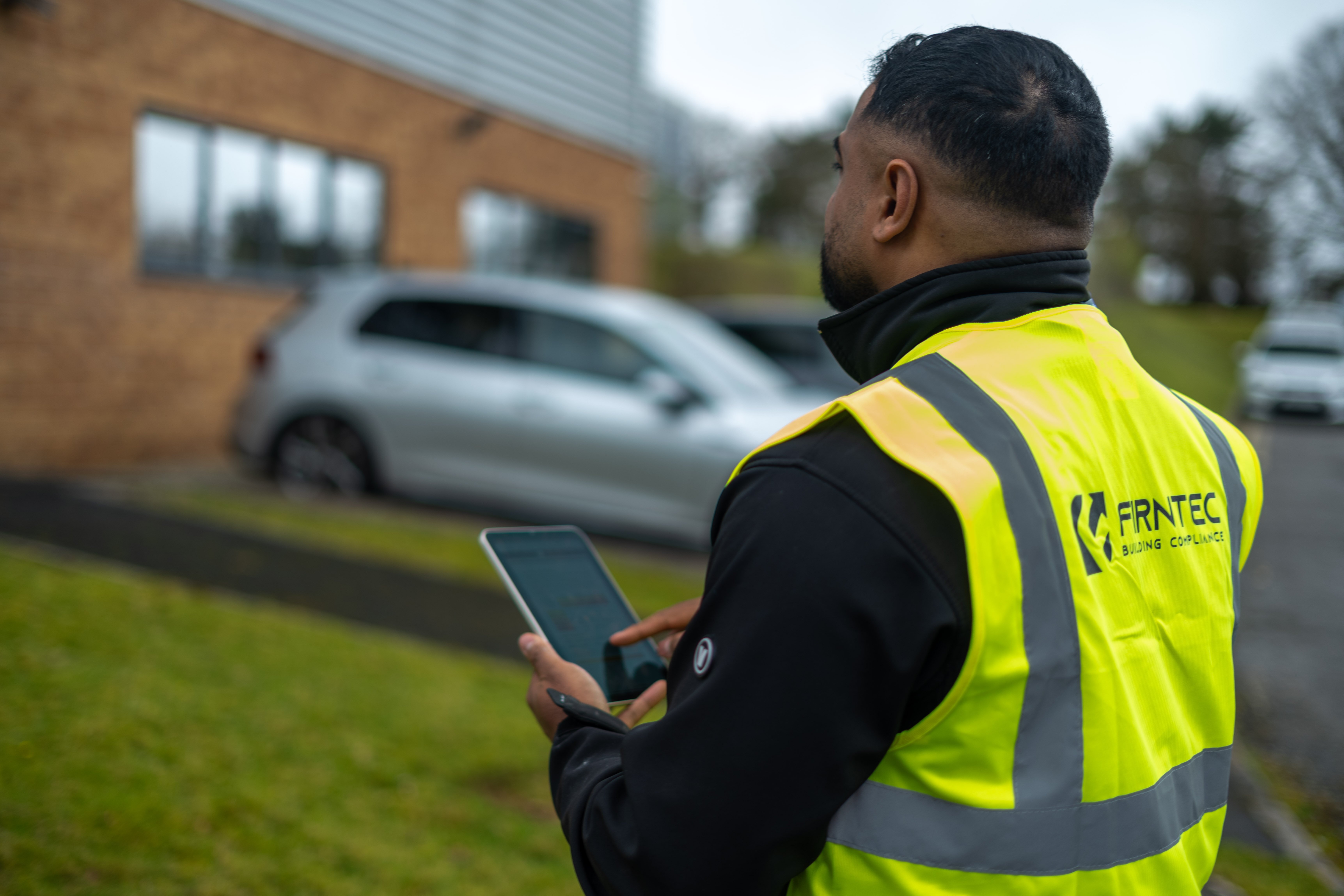
Fire Risk Appraisal of External Walls (FRAEWs)
A Fire Risk Appraisal of External Walls (FRAEW) is a structured assessment of the fire risk posed by a building’s external wall system. Guided by PAS 9980, this process helps competent professionals evaluate cladding materials and construction features, particularly in multi-storey, multi-occupied residential buildings.

FRAEW and the Law
An FRAEW is not a legal requirement, but it may be necessary to meet legal obligations under the Fire Safety Order (2005), particularly following the introduction of the Fire Safety Act 2021, which clarified that the external walls of a building fall within the scope of a fire risk assessment.
This means that if a building’s external wall system could pose a fire risk especially in multi occupied residential buildings a responsible person may be legally required to have an FRAEW carried out as part of their overall fire risk assessment to remain compliant.




What is the PAS9980 Process
Using a five-step risk-based method, PAS 9980 guides professionals through the Fire Risk Appraisal of External Walls (FRAEW). It evaluates construction materials, fire spread potential, and safety controls, resulting in a clear risk rating for the building.
Scope the Appraisal
Define the purpose of the FRAEW, identify the building(s) to be assessed, and gather relevant documentation such as architectural drawings, fire strategies, and previous surveys.
Identify Relevant Fire Hazards
Examine the materials and construction of the external wall system, including cladding, insulation, fixings, and cavity barriers, to determine the presence of combustible or hazardous elements.
Evaluate the Risk of Fire Spread
Assess how likely fire is to spread via the external wall system, considering factors like vertical and horizontal fire spread, building height, occupancy type, and fire safety provisions.
Determine Risk Rating and Need for Action
Based on the identified risks, assign a risk rating (e.g. low, medium, or high) and recommend whether any remedial actions or interim measures are necessary.
Document and Report Findings
Produce a written report that clearly outlines the appraisal process, findings, risk rating, and any recommended next steps for managing or mitigating fire risk.

What your report should include:
- The name, address and postcode of the building
- The statement of competence
- Evidence of building height
- Basic document control information
- Scope
- Conclusions and recommendations
- The technical check and required imagery as evidence
History of FRAEWs
The term Fire Risk Appraisal of External Walls (FRAEW) was formally introduced in January 2022 with the publication of PAS 9980:2022, developed by the British Standards Institution (BSI) in collaboration with industry experts. This guidance replaced the government’s earlierFRAEWs and EWS1 forms are closely related but serve different roles. An FRAEW is the detailed fire risk assessment of a building’s external wall system, carried out in line with PAS 9980. The EWS1 form records the outcome of that assessment for lenders during property sales or remortgages. Consolidated Advice Note (2020), which provided interim fire safety recommendations, particularly regarding the combustibility of external wall materials and insulation.
Prior to PAS 9980, the process was informally referred to as a Fire Risk Assessment and Appraisal (FRAA), a term used in the draft PAS document released for public consultation in April 2021. The final version replaced FRAA with FRAEW, standardising the terminology and introducing a structured, risk-based methodology for assessing the fire performance of external walls on multi-occupied residential buildings.
FRAEWs & EWS1 Forms
FRAEWs and EWS1 forms are closely related but serve different roles. An FRAEW is the detailed fire risk assessment of a building’s external wall system, carried out in line with PAS 9980. The EWS1 form records the outcome of that assessment for lenders during property sales or remortgages.




